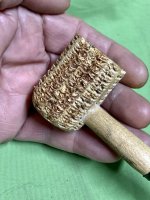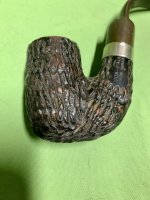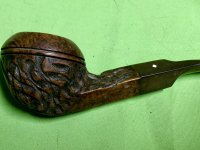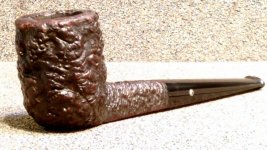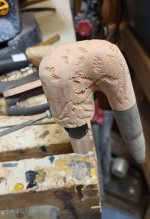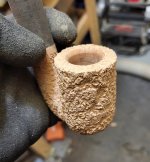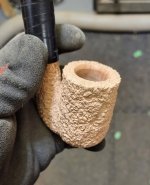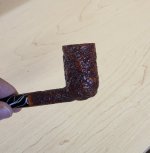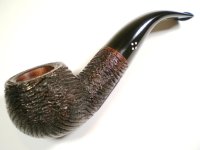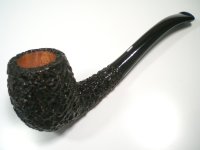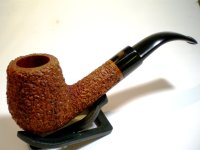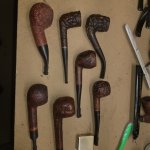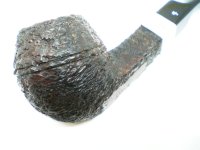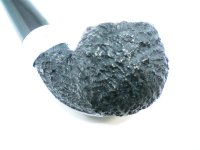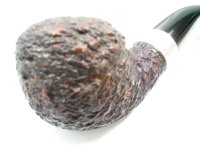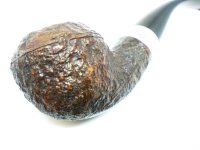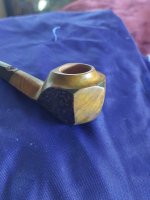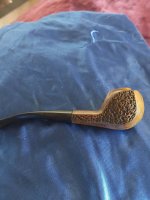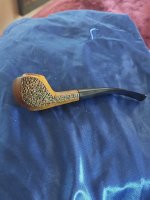Some briar is harder than others. It depends on where and how it grew and how long it's sat since curing. Algerian briar is soft and strangely waxy, and that hasn't changed in 100 years. Dunhill speaks of having a load of the stuff that he found significantly poorer than his usual Calabrian wood, and there's a tale about leaving a lot of briar behind a boiler, forgotten for many months, and in returning to the dessicated wood, he noticed the texture in it, and began to explore ways to heat-cure the wood and draw this texture out.
The actual shell patent bears reading:
https://www.folloder.com/pdf/1341418.pdf
All briar does not blast the same, not region to region and not day to day. The internal density of the growth rings plays a huge part, and the actual hardness (which is both inherent and developed with age) of the wood plays a part. Fresh from the mill, I don't find briar blasts near as well as it does with ten years of sitting. And that's what Alfred's process emulated, in some ways.
It's not TOTALLY unpredictable how a pipe will blast, but you never know for sure if the rings are going to show how you hope, or if the xylem are going to be predominant, or if one side of the pipe will act the same as the other. So the best blasts, even and deep, are for sure real rarities, and worthy of collecting if one is into that sort of thing. And that's the argument against rustication's "value" - you can take any block of briar and carve it to whatever result you want, there's no element of the nature of the wood on display, really. Rusticating, the briar is at our mercy. Blasting, it's the other way round.







